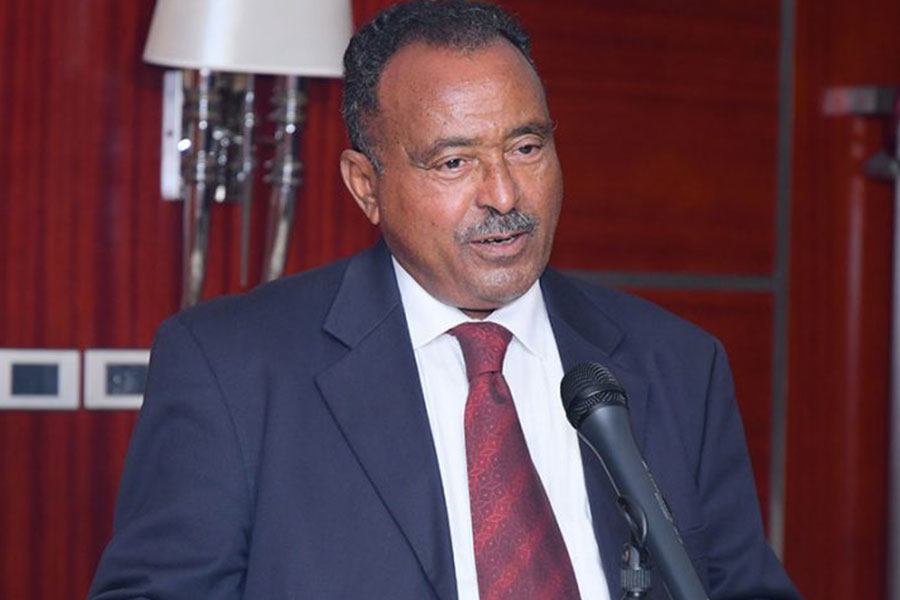
Fortune News | Sep 11,2020
Aug 28 , 2021
By Abdulmenan M. Hamza
In the face of persistently high inflation, real saving and lending rates have remained negative for most of the past decade and a half. The main beneficiary from this state of affairs is the government, the state-owned enterprises (SOEs) and private-sector borrowers, while the main culprit is a distorted financial market, writes Abdulmenan Mohammed (abham2010@yahoo.co.uk), a financial analyst with over two decades of experience.
The philosophical basis under which the Ethiopian developmental state model rests has a significant contribution to many of today's economic woes. The implementation of this paradigm, although in a flawed form, has caused classic government failures while trying to correct market failures prevalent in developing countries. To address market failures in credit markets, several instruments have been used, including directed credit schemes, the increasing dominance of the state banks, expanding borrowing from the central bank, a range of administered interest rates, and repressive financial policies.
These instruments have caused considerable market distortion in banking. Ironically, they remain intact despite the promises of reform encompassed in various documents.
The developmental state model embeds the state-directed financial system in which resources are allocated according to the government’s priority. The distortions currently playing out can be traced to an era when the country fell under the spell of socialism, in which the state controlled economic activities. But the reversal of the liberal reforms of the 1990s and early 2000s following the adoption of the developmental state in the mid-2000s is the main culprit.
The new economic paradigm increased the breadth and width of state intervention in the financial system. The presence of market imperfections, including capital constraints, information asymmetry and uncertainty about risks and returns, have encouraged the government to intervene in the banking industry extensively to bolster long-term investments.
One of the methods applied is keeping lending interest rates to state-owned enterprises (SOEs) and priority sectors down, which is much lower than what would be in a competitive market. When this is combined with a direct credit scheme to SOEs, the result is a massive build up of debts, which would be unthinkable in a competitive banking market.
Below-market lending rates have had a severe ramification of distorting many of the interest rates. Here is how the logic plays out. The Commercial Bank of Ethiopia (CBE) sets its lending rates much lower than what they should be in a competitive market as it is the main policy arm of the government. To sustain its cheap lending, it sources significant deposits at generous terms from the SOEs and other government agencies. In such a situation, the private banks are price takers in the lending market due to the constraint set by the pricing conduct of the CBE and its market power, service homogeneity and meagre switching costs for customers.
Coupled with the floor saving rate set by the National Bank of Ethiopia (NBE) and the strategy of the private banks to earn constant interest margin, the result is savings rates remaining close to the minimum threshold even though there is a significant surge in inflation. For instance, the difference between the maximum and minimum savings rate has been two percent between 2001 and 2019, according to the NBE. This saving rate setting strategy is sometimes supported by the collusive behaviour of private banks.
This is telling about how the banking market is distorted. In the presence of a competitive financial system, lending interest rates respond to the inflation rate, in addition to the prices of inputs such as saving rates and other operating costs. However, it is striking that in the face of persistently high inflation, real saving and lending rates have remained negative for most of the past decade and a half, causing a significant transfer of wealth from savers to borrowers. The main beneficiary from this state of affairs is the government, the state-owned enterprises (SOEs) and private sector borrowers.
Apart from facilitating a significant transfer of wealth from savers to borrowers, distorted interest rates have reduced the effectiveness of monetary policy, caused a significant accumulation of bad loans and advances, distorted resource allocation and discouraged saving.
If we go by previous experience, changing to the minimum savings rate is the most effective instrument affecting all interest rates. The trouble is that it will squeeze the interest margin of mainly the CBE, which has given a significant amount of long-term loans to SOEs at a very low fixed interest rate. If the minimum saving rate is pushed up, the interest margin gets thinner as the CBE cannot easily pass the increment to its mega borrowers. This would probably cause financial distress to the bank.
Sadly, enacting a significant interest rate increase on the existing borrowers would burden the mega borrowers, mainly SOEs and other government bodies that are already highly indebted with massive interest costs. This is not practical.
The financial sector is in a quagmire. Untangling the banking industry from the scourges of distortion requires a well-considered policy and time. The policy should consider a gradual increase of the savings rate, scaling down the privileges afforded to the CBE so that it would set a competitive price for its lending and subjecting borrowing to the SOEs to the normal credit assessment procedures.
There should also be monitoring of any collusive behaviour among the private banks and fastening the development of the treasury bills market to push all interest rates up.
PUBLISHED ON
Aug 28,2021 [ VOL
22 , NO
1113]


Fortune News | Sep 11,2020

Radar | Apr 08,2023

Fortune News | Apr 09,2022

Viewpoints | Jul 10,2020

Obituary | Jun 15,2025

Radar | Jun 15,2019

Commentaries | Mar 23,2019

Radar | Jan 19,2024

Radar | Apr 08,2023

Commentaries | Mar 25,2023

My Opinion | 131507 Views | Aug 14,2021

My Opinion | 127863 Views | Aug 21,2021

My Opinion | 125841 Views | Sep 10,2021

My Opinion | 123471 Views | Aug 07,2021

Dec 22 , 2024 . By TIZITA SHEWAFERAW
Charged with transforming colossal state-owned enterprises into modern and competitiv...

Aug 18 , 2024 . By AKSAH ITALO
Although predictable Yonas Zerihun's job in the ride-hailing service is not immune to...

Jul 28 , 2024 . By TIZITA SHEWAFERAW
Unhabitual, perhaps too many, Samuel Gebreyohannes, 38, used to occasionally enjoy a couple of beers at breakfast. However, he recently swit...

Jul 13 , 2024 . By AKSAH ITALO
Investors who rely on tractors, trucks, and field vehicles for commuting, transporting commodities, and f...

Jun 28 , 2025
Meseret Damtie, the assertive auditor general, has never been shy about naming names...

Jun 21 , 2025
A well-worn adage says, “Budget is not destiny, but it is direction.” Examining t...

Jun 14 , 2025
Yet again, the Horn of Africa is bracing for trouble. A region already frayed by wars...

Jun 7 , 2025
Few promises shine brighter in Addis Abeba than the pledge of a roof for every family...

Jun 29 , 2025
Addis Abeba's first rains have coincided with a sweeping rise in private school tuition, prompting the city's education...

Jun 29 , 2025 . By BEZAWIT HULUAGER
Central Bank Governor Mamo Mihretu claimed a bold reconfiguration of monetary policy...

Jun 29 , 2025 . By BEZAWIT HULUAGER
The federal government is betting on a sweeping overhaul of the driver licensing regi...

Jun 29 , 2025 . By NAHOM AYELE
Gadaa Bank has listed 1.2 million shares on the Ethiopian Securities Exchange (ESX),...